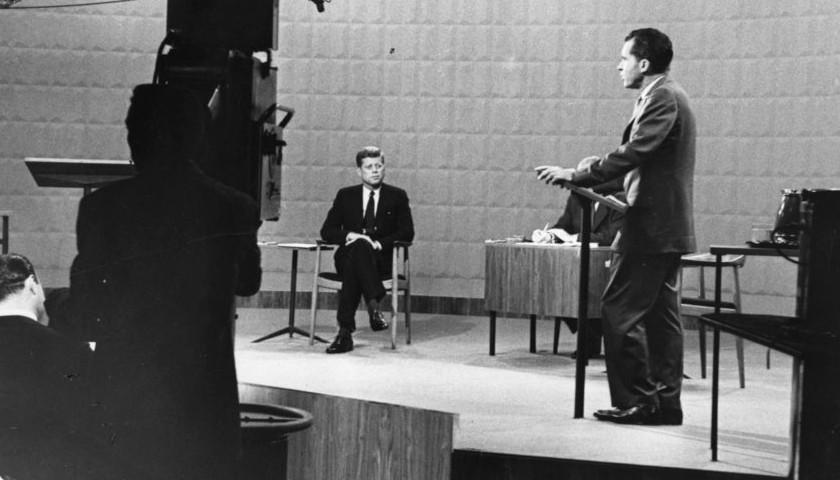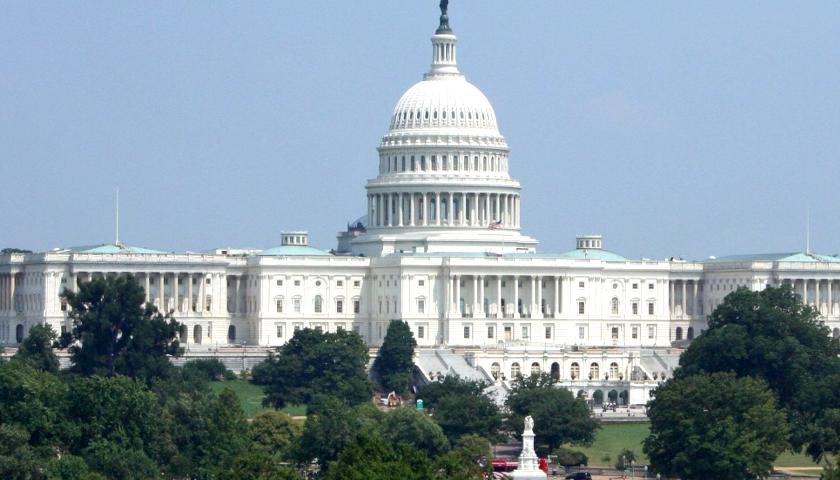The disbarment trial of Donald Trump’s former attorney and constitutional legal scholar, John Eastman, is in its eighth week and expected to continue into a ninth week. On Wednesday, Eastman testified all day, focusing on the 1960 election and then-Vice President Richard Nixon’s role in deciding which of three electoral slates from Hawaii to accept.
Eastman said Nixon received three slates of electors from Hawaii, including one that was not certified — the second one from the Democrats. Nixon opened up all three envelopes and chose which one to accept, the third Democratic one that was certified by the governor after the recount. None of the alternate slates of electors in the 2020 election were certified by a state government entity.
Eastman’s attorney, Randy Miller, asked him about his reliance on the Congressional Record from the 1960 presidential race. It went into significant detail about how Nixon exercised his authority in accepting the third slate. Referring to Nixon as “the Chair,” part of it stated, “In order not to delay the further count of the electoral vote here, the Chair, without the intent of establishing a precedent, suggests that the electors named in the certificate of the Governor of Hawaii dated January 4, 1961, be considered as the lawful electors from the State of Hawaii.” No one in Congress objected.
Eastman went over how he researched and discovered, like several other legal scholars — including their articles here, here, and here, which were discussed previously in the trial — that the 1887 Electoral Count Act (ECA) was likely unconstitutional. It became clear to him after researching that the Constitution did not give Congress the authority to decide disputed electoral slates, so Congress did not have the authority to pass the ECA, giving itself the power.
Eastman discussed the six-page memo he gave the Trump team regarding the proposed situations that might occur depending on what Vice President Mike Pence chose to do. He went over multiple options in it, not just rejecting electoral slates from the disputed states.
California Bar Disciplinary Judge Yvette Roland, who contributed to Democrats while serving on the bench, appeared to have some difficulty following Eastman’s explanation about what he meant when he agreed with Pence’s attorney, Greg Jacob, that the U.S. Supreme Court would rule unanimously against Pence’s decision. Jacob, who testified previously in the trial, said if Pence rejected the disputed electoral slates, there would be a 9-0 vote by SCOTUS rejecting his authority to do so. Eastman agreed because even though most legal scholars believe it is a nonjusticiable issue, the courts aren’t allowed to adjudicate the case. Eastman said he believed they would find an excuse to intervene anyway.
At the same time, Eastman said he believed if Pence merely delayed the certification, which he thought was a better path, a majority on the Court would agree or decide it was nonjusticiable, allowing the decision to stand.
Next, Eastman talked about a letter that Pence sent to Congress on January 6, 2021, stating that he did not have the authority to reject electoral slates. Pence admitted in his letter that there were “significant allegations of voting irregularities and numerous instances of officials setting aside state election law.” Eastman said he believed due to that lawbreaking, the election was unconstitutional, which is why Pence could have delayed certification and let the state legislatures investigate the fraud.
Eastman said Pence had already made up his mind that he would accept the disputed electoral slates by January 4, 2021, when Eastman had his meetings with him, Trump, and others. However, Pence gave a speech at a rally in Georgia that day, where he said, “I know we all have got our doubts about the last election. I want to assure you that I share the concerns of millions of Americans about voting irregularities. I promise you, come this Wednesday, we will have our day in Congress. We’ll hear the objections, we’ll hear the evidence…”
Miller spent a lengthy amount of time discussing a memo Jacob drafted for Pence, similar to the memo Eastman drafted for the Trump team regarding the options of the vice president. In it, Jacob said it was disputed whether or not the vice president had substantive authority over accepting or rejecting disputed electoral slates. “There is disagreement, however, whether the text of the Twelfth Amendment privileges the Vice President to play a decisive role in resolving objections to electoral votes on their merits, or whether (pursuant to the Electoral Count Act) the role of the Vice President in resolving dispute is largely ministerial,” he said.
Jacob said, “There is some historical evidence that Adams and Jefferson both resolved issues over the validity of electoral votes in their own favor, and in 1857 the President of the Senate (a role filled by Senator John Crittenden, as the Vice Presidency was then vacant) personally overruled an objection to the counting of Wisconsin’s electoral votes, and asserted that it was his responsibility to make the validity determination in the first instance, while suggesting that the House and Senate might thereafter jointly overrule him.”
He added, “Because there are only a few instances of historical practice under the Electoral Count Act, however, the question of its constitutionality remains muddy, and scholars continue to this day to debate the constitutionally appropriate role of the Vice President in resolving objections to electoral votes.”
Jacob also admitted that the ECA wasn’t followed when Nixon decided to single-handedly decide which slate of electors to accept from Hawaii.
“Indeed, it appears that the only time the Electoral Count Act’s prescribed process for resolving disputes was not been followed since its enactment was in 1961, when Vice President Nixon magnanimously resolved against himself a dispute over three competing slates of electors that had been submitted by the State of Hawaii,” he said.
Eastman agreed with Jacob on that point and explained that the ECA provides that the two houses of Congress are supposed to split up and separately decide which disputed slate to accept, then reconvene and hash it out. After studying this, Eastman said he came to the conclusion that the ECA is either unconstitutional or not binding on Congress.
Eastman discussed a letter that Democratic Congresswoman Patsy Mink of Hawaii sent on December 11, 2000, to her colleagues. It referenced the alternate slates of electors in Hawaii in 1960 and suggested that the Democrats could do the same thing again in the disputed 2000 election between George W. Bush and Al Gore, prepare their own alternate slate of electors while the litigation was still pending. The California Bar’s attorney, Duncan Carling, objected to accepting it into evidence, but Roland overruled him.
When discussing why state legislatures in the disputed states didn’t vote on sending alternate slates, Eastman said the legislatures weren’t in session. Pennsylvania was completely out of session all during December 2020, he said. However, the chairs of election committees were working on things, there were legislative hearings, and the Wisconsin Assembly passed a resolution. Additionally, some of the legislators asked the governors to call special sessions and the governors refused.
A significant amount of time was spent going over the California bar’s charges against Eastman. The Notice of Disciplinary Charges (NDC) attempted to portray Eastman’s advice to the Trump team as narrowly urging Pence to reject electoral slates from the disputed states and having the state legislatures decide to send alternate slates for Trump. Eastman explained how his advice, provided both in his two memos and verbally, offered a range of possibilities and options.
Another section Eastman said was inaccurate stated, “During the discussion, respondent conceded that the positions he was urging Pence to take were contrary to historical practice, violated several provisions of statutory law, and would likely be unanimously rejected by the Supreme Court.”
To the contrary, Eastman said he didn’t concede his advice was counter to historical evidence or illegal, and he reiterated his earlier clarification about the unanimous Supreme Court prediction. Section 21 of the NDC blamed Eastman for some tweets by Trump encouraging Pence to reject the disputed electoral slates. Eastman said he had nothing to do with Trump’s tweets. A “Pence Card” strategy drafted by someone else, apparently on White House stationery, had been circulated before Eastman’s advice suggesting Pence reject the slates.
One of the sections in the NDC stated that Eastman only offered two options. Eastman responded, “That has so many inaccuracies I don’t know where to begin.”
When discussing his involvement in the Texas v. Pennsylvania election challenge case, Eastman said since mail-in ballots were coming in with such high numbers for Biden over Trump in Pennsylvania’s 2020 election, that the net benefit of the illegally cast ballots — which he said were due to relaxing signature matching requirements — helped Biden.
In that case, Eastman agreed to represent Trump in a Motion to Intervene in Texas’s Bill of Complaint filed with SCOTUS. The complaint asked to stop Georgia, Michigan, Pennsylvania, and Wisconsin from certifying their 2020 election results due to multiple violations of state law and constitutional problems. Eastman said he thought it was quite significant that six attorneys general agreed with his position on this.
Eastman said his motion added a discussion of his concern that Georgia Secretary of State Brad Raffensperger had entered into a settlement with Democratic Parties before the election that would allow signature reviewers to compare voters’ signatures to their signatures on their absentee ballot applications, expanding the comparison beyond their original voter registration signatures. He was concerned that fraudulent people could apply for absentee ballots in other people’s names and have them mailed to them instead.
Roland continued to object to the testimony as she had on previous days when the case was discussed, stating that it was not relevant. Eastman said that Missouri decided to file its own Motion to Intervene that specifically incorporated his Motion to Intervene, and Roland said it was still not relevant.
Regarding the election lawsuit Trump v. Raffensperger, Eastman explained that it was thwarted by the judicial system. He said an eligible judge wasn’t even assigned to the case until January 4, 2021, and a status conference was set for January 8. So after January 6, the case was voluntarily dismissed due to mootness.
Eastman explained that the election lawsuits concentrated on regular lawbreaking, not election fraud, since “fraud has to be pled with particularity and until you get to discovery that is very difficult to do.” The courts have frequently overturned elections due to violations of state law that weren’t fraud.
After Eastman finishes testifying, his team intends to put two character witnesses on the stand, and the California Bar will produce its aggravating and rebuttal witnesses. The live stream is here.
– – –
Rachel Alexander is a reporter at The Arizona Sun Times and The Star News Network. Follow Rachel on Twitter / X. Email tips to [email protected].





